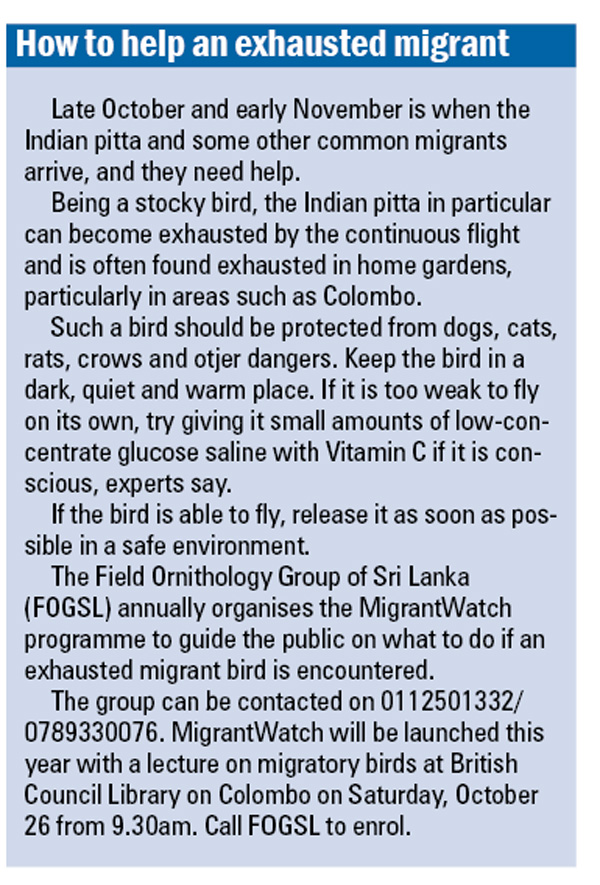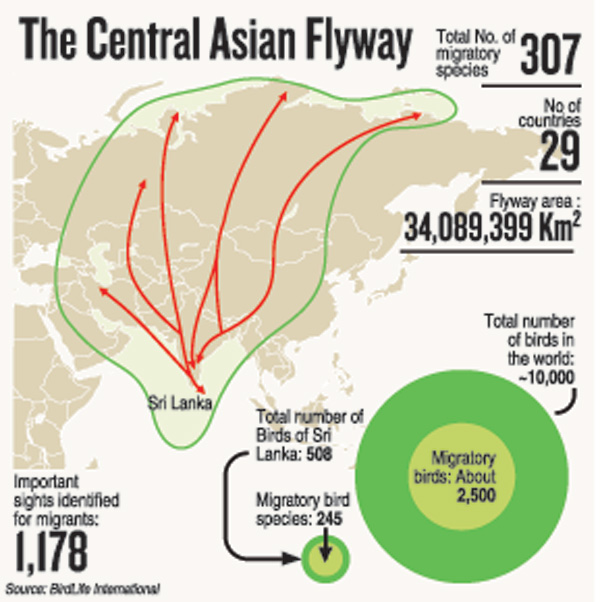News
Expect thousands of ‘dual citizens’ at election time
While the dual citizenship of presidential election candidates has been a hotly-debated topic in the political arena, it is expected that thousands of other “dual citizens” will be in Sri Lanka by election day in November.
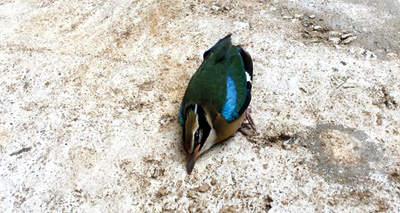
Exhausted Indian Pitta found fallen on 28.10.2018. Pix by Sarath N. Senanayake
Some of them are eligible for European passports while others come from Asian countries.
None, however, will come through immigration channels, and they do not care at all about the political drama in Sri Lanka.
These dual citizens are migratory birds that come here annually from northern countries at this time.
About 2,500 of the 10,000 world bird species engage in long-distance migration as a response to changing weather and the availability of food, spending their life in different countries.
Nearly half – 245 species – of the 508 bird species recorded in Sri Lanka are migratory and generally begin arriving in late August, staying on here until about March-April next year before returning to their country of origin to breed.
“As the main steps of the migratory routine are predictable and move in a rhythm, bird migration can be considered to be like a ballet dance – in fact, bird migration could be called the greatest dance in the world,” ornithology expert Dr. Sampath Seneviratne told the Wildlife and Nature Protection Society this week.
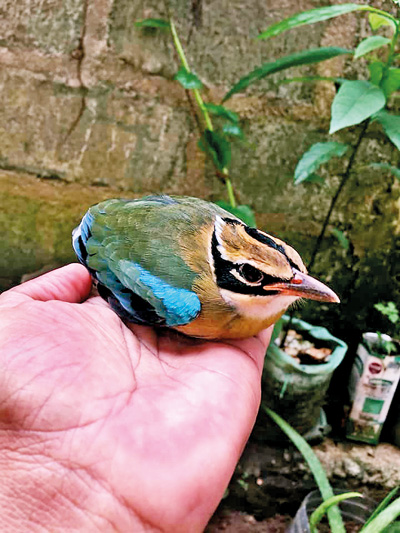
A helping hand for the Indian Pitta
“Birds that breed in European countries such as Russia, and in Asian countries such as China, Mongolia, Afghanistan and India, migrate to Sri Lanka.
“We need more research on migratory patterns as there is a lot to unravel,” said Dr. Seneviratne, President of the Field Ornithology Group of Sri Lanka (FOGSL) and a senior lecturer at the University of Colombo.
Historically, migrating birds are believed to have arrived in Sri Lanka along three main routes to Sri Lanka, using designated pathways. This view was based on observations carried out in colonial times.
“It is time to have more advanced research to link the dots with the use of new technologies,” said Dr. Seneviratne.
The traditional method of researching migration is carried out with the use of rings fixed on birds’ legs.
If a bird with a ring fixed by ornithologists in one country is found in another country it acts as proof of presence of the bird at two locations.
Science has led to improvements in tracking. The new trend is “geo-tagging”, in which scientists place a satellite tag on a bird. The tag emits signals that pinpoint the bird’s location.
Dr. Seneviratne said satellite tracking by India has led to findings that contradict traditional knowledge of the main routes used by birds migrating to Sri Lanka.
“Geo-tagging is expensive, so we can’t do it in Sri Lanka at this point,” he added.
A national bird-ringing program carried out by FOGSL and the Department of Wildlife Conservation (DWC) under Professor Sarath Kotagama has revealed interesting patterns such as the same birds migrating annually to the same site – sometimes to the same plots – in a pattern used by their ancestors.
“Some people believe the ringing process puts birds in danger. But this is a myth and it is perfectly safe, and I’m bit disappointed when I hear such allegations,” the FOGSL President said.
“We need science, and without understanding birds, their behaviour and their migratory patterns it is not possible to conserve them.”
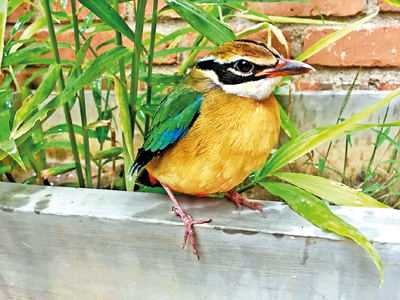
About an hour later the bird had revived
